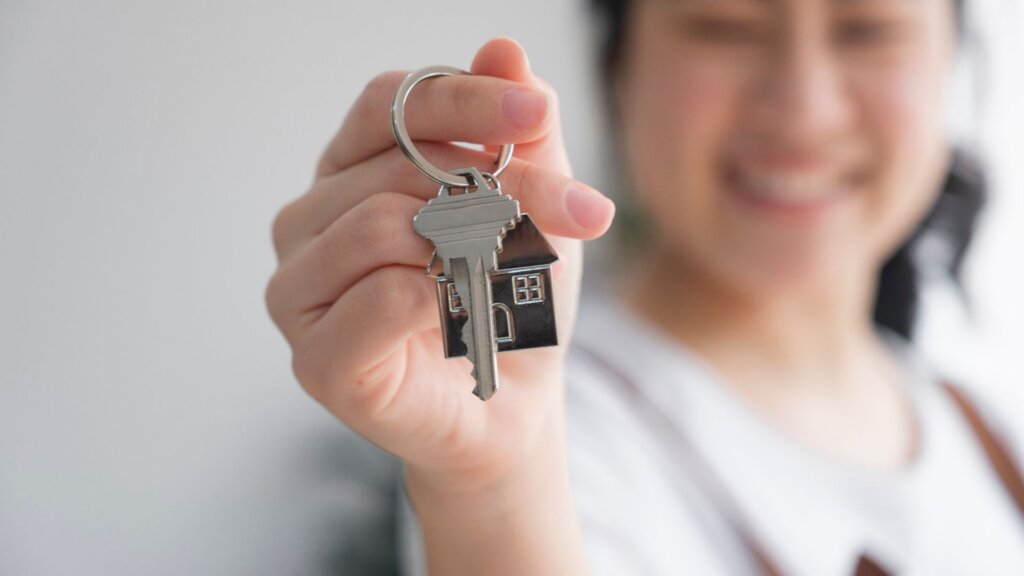
Many homeowners face the challenge of buying a new house before selling their current one. This process requires careful planning, financial readiness, and a clear strategy to ensure everything runs smoothly. It offers advantages, like avoiding temporary housing, but also brings complexities, such as managing overlapping costs.
Through this guide, we’ll explore the steps, challenges, and strategies for how to buy a house before selling your house, ensuring you’re well-prepared to navigate this journey. Read on to learn more.
Why Consider Buying Before Selling?
Buying before selling offers both practical and emotional benefits:
Advantages
- Avoid Temporary Housing: Moving directly from your old home to your new one eliminates the hassle of finding temporary accommodations.
- Secure Your Dream Home: In competitive markets, you might need to act quickly to avoid losing out on the perfect property.
- Streamlined Moving: Coordinating a seamless transition reduces stress and logistics.
- Greater Control Over Timing: You won’t feel pressured to accept a low offer on your current home just to buy the new one.
Challenges
- Dual Financial Obligations: Managing two mortgages can strain your budget if the current home doesn’t sell quickly.
- Market Uncertainty: Housing market fluctuations can complicate timing and pricing for both buying and selling.
- Risk of Overpricing: If your old home doesn’t sell quickly, you may face carrying costs or need to lower the price significantly.
Also Read: Debunking 6 Common Myths About Selling Your Texas Home
Assessing Your Financial Readiness
A thorough evaluation of your financial health is critical before buying or selling a home. Understanding your budget, mortgage options, and financial obligations ensures that you can manage two properties without undue stress.
1. Understand Your Budget
Start by calculating the total costs associated with owning two homes simultaneously. These include:
- Mortgage Payments: Covering monthly payments for both properties can strain your budget. For instance, the average mortgage payment in Texas is approximately $1,750, depending on the home’s location and value.
- Property Taxes: Texas has some of the highest property tax rates in the U.S., with an average of 1.69% of a home’s assessed value. This means a $300,000 home could incur $5,430 in annual taxes.
- Insurance: Home insurance is mandatory for most mortgage holders. Insuring both properties will add to your monthly costs.
- Maintenance: Unexpected repairs or upkeep can quickly escalate expenses. Allocate at least 1% of each property’s value annually for maintenance costs.
Assess your available funds, including savings, income, and existing home equity. Equity—the difference between your home’s value and what you owe—can act as a vital resource for your new home purchase. For example, if your current home is valued at $400,000 and you owe $250,000, you have $150,000 in equity that could contribute to the new property.
2. Get Pre-Approved for a Mortgage
A pre-approval letter from a lender is essential when buying a house before selling your current one. It assures sellers that you’re financially capable and demonstrates your borrowing capacity. During pre-approval, lenders evaluate:
- Income and Employment Stability: Verifying consistent income ensures you can handle dual payments.
- Debt-to-Income Ratio (DTI): Lenders typically require a DTI below 43%. For example, if your gross monthly income is $8,000, your total monthly debt obligations (including two mortgages) should not exceed $3,440.
- Credit Score: A higher credit score often secures lower interest rates. To qualify for a conventional mortgage, most lenders typically expect borrowers to have a credit score of at least 620.

3. Evaluate Your Debt-to-Income Ratio
Your DTI measures your monthly debt obligations against your income. A manageable DTI ensures mortgage approval and avoids overextending your finances. For example:
- Low DTI (Below 36%): Indicates strong financial health and eligibility for competitive loan terms.
- High DTI (Above 43%): Improving your ratio may require paying down smaller debts, such as credit cards or personal loans.
The average DTI for approved mortgages in 2023 was 36%. Consider consolidating or refinancing debts to reduce monthly payments if your ratio exceeds this benchmark.
Also Read: Costs You May Face When Selling Your House in Killeen
Financing Options For Buying Before Selling
Navigating how to finance a new home while waiting to sell your current property can be complex. Here are some practical financing solutions to consider, each with its benefits and challenges.
1. Bridge Loans
A bridge loan is a short-term loan designed to “bridge” the financial gap between buying a new home and selling your current one. This loan allows you to access funds quickly, enabling you to make an offer on a new property without waiting for the sale of your existing home.
- Pros: Bridge loans offer immediate access to capital, making them ideal in competitive markets like Austin, where homes sell quickly. They also allow you to avoid contingent offers, strengthening your position as a buyer.
- Cons: These loans typically have higher interest rates and fees compared to conventional mortgages. Additionally, you’ll need to meet lender requirements to qualify, including a strong credit score and manageable debt-to-income ratio. Ensure you have a clear timeline to repay the loan to avoid financial strain.
2. Home Equity Line of Credit (HELOC)
A HELOC allows you to borrow against the equity in your current home. The loan functions like a credit card, offering flexible borrowing limits and lower interest rates than personal loans.
- Pros: HELOCs provide financial flexibility, allowing you to borrow only what you need. With Texas home values averaging $350,000, homeowners with substantial equity can secure favorable terms.
- Cons: If you’re unable to repay the loan, you risk losing your current home. Additionally, accessing a HELOC during a market downturn could reduce your borrowing limit if property values decline. It’s vital to calculate repayment plans carefully before committing.

3. Renting Out Your Current Home
Temporarily renting out your existing home can generate income to offset expenses while transitioning to your new property.
- Pros: Renting can cover mortgage payments, property taxes, and maintenance costs. With rental demand in Central Texas on the rise—especially in cities like Georgetown and Harker Heights—this strategy can provide a reliable income stream.
- Cons: Becoming a landlord requires additional management and legal considerations, such as drafting lease agreements and addressing tenant needs. You’ll also need to ensure the property complies with local rental regulations, which may involve upfront costs for repairs or certifications.
Navigating The Real Estate Market
When learning how to sell a house and buy another, understanding market dynamics is crucial. Market conditions significantly influence your buying and selling success. Here’s how to navigate the process effectively.
1. Timing the Market
Timing is everything in real estate. Ideally, aim to buy during a buyer’s market—when there are more homes available, leading to lower prices—and sell during a seller’s market, characterized by high demand and fewer homes.
For instance, in Texas cities like Austin, spring and summer months often bring seller-friendly conditions. According to the National Association of REALTORS® (NAR), homes in competitive markets like Austin spend an average of 33 days on the market during peak seasons. Understanding these trends can help you maximize your financial outcomes.
2. Use Local Expertise
Working with a skilled real estate agent familiar with your local market ensures you receive expert advice on pricing, timing, and negotiation. An agent can help you set a competitive price for your home to attract buyers quickly while assisting you in securing your next property. In Texas, local expertise is particularly valuable for navigating challenges like rising property taxes and complying with specific regulations.

3. Finding Your Next Home
Start by identifying your priorities, such as must-have features and preferred locations, to streamline your search. Utilize online platforms to explore options—97% of buyers began their home search online, highlighting the importance of digital tools like Zillow and Realtor.com. In fast-moving markets like Georgetown, where demand is high, staying organized and focused on your criteria will help you act quickly when the right property becomes available.
Challenges and Solutions When Buying Before Selling
Buying a home before selling your current one presents challenges, but smart strategies can help you navigate them effectively.
1. Limited Time
Balancing two transactions in a competitive market can be stressful.
Solution: Use bridge loans to fund your purchase while waiting for your current home to sell. Alternatively, sell to cash buyers, who often close within 7–14 days, expediting the process. In 2024, 26% of all home purchases were made by cash buyers, showcasing their efficiency in speeding up sales.
2. Financial Stress
Owning two homes temporarily can strain finances due to dual mortgage payments and upkeep costs.
Solution: Budget conservatively by cutting non-essential expenses and consult a financial advisor to manage cash flow. Consider HELOCs for short-term liquidity. Homeowners with a debt-to-income ratio under 36% are more likely to qualify for affordable financing options.
3. Contingencies
Contingent offers are often less attractive to sellers, especially in competitive markets.
Solution: Negotiate flexible terms or use financing options like HELOCs to avoid contingencies and strengthen your offer. Sellers accept offers with contingencies, which highlights the importance of strategic negotiations.

Is Buying Before Selling Right For You?
Deciding whether to buy a home before selling your current one depends on your financial stability, market conditions, and personal priorities. Here’s a closer look at when this strategy works and when it might not.
When It Makes Sense
Buying before selling can be a smart move if you have the financial flexibility to manage the transition.
- Financial Security: If you have a strong credit score, savings to cover dual mortgage payments, and a debt-to-income (DTI) ratio below 36%, you’re in a good position. Lenders are more likely to approve financing, ensuring a smoother process.
- Meeting Long-Term Needs: If the new home aligns with your long-term goals—such as being closer to work, better school districts, or a larger space for a growing family—buying before selling becomes more compelling.
In 2024, 30% of homebuyers chose their location to be closer to family and friends, while 21% prioritized getting more for their money.
When It Doesn’t
This approach may not be suitable for everyone, especially if finances or market conditions create added risks.
- Tight Budget: Managing two mortgages can strain your budget, especially if your current home takes longer to sell. Unexpected costs, such as repairs or staging, can further increase expenses.
- Sluggish Market: If your local market is slow, selling your home quickly becomes challenging, increasing the financial burden of owning two properties simultaneously.
In 2023, slower markets saw homes linger 22 days longer on average than competitive areas, adding financial stress for sellers
Also Read: What You Need to Know About Selling a House With Multiple Owners in Killeen
Effortless Home Selling with Agreeable Offer
Managing the complexities of buying a new home before selling your current one can feel overwhelming, but Agreeable Offer is here to ease the process.
- Quick Home Sales: We provide fast cash offers for your current home, enabling you to free up funds and focus on purchasing your next property without delays.
- Hassle-Free Transactions: Our experienced team takes care of the entire selling process, including paperwork and closing costs, so you can concentrate on moving forward.
- Local Market Expertise: With deep knowledge of Texas real estate markets, we offer personalized advice and solutions tailored to your specific circumstances.
Final Thoughts
Buying a house before selling your current one is a viable strategy when planned effectively. By understanding your financial readiness, exploring the right financing options, and timing the market strategically, you can make the process smooth and stress-free. Whether you’re navigating local markets in Texas or managing the logistics of owning two properties, professional guidance is key.
If you’re ready to simplify the process, Agreeable Offer can help. With fast cash offers, expert advice, and hassle-free solutions, we ensure a seamless experience for homeowners. Contact us today to take the first step toward your new home!

